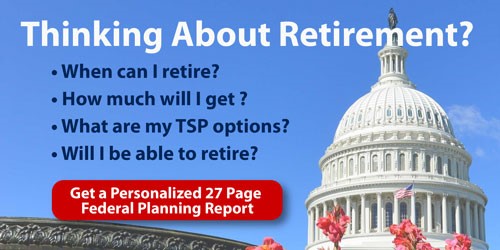Posted on Friday, 29th October 2021 by Dennis Damp
 Print This Post
Print This Post
There are many things to consider when reviewing your FEHB health care plans during open season. Plan premiums and benefits change year to year. Without a thorough review and comparison between plans you could unintentionally pass up a better deal. I know this firsthand, as a federal employee for 36 years and a retiree these past 17 years, it is much easier to simply do nothing and continue on with a plan that may not fully meet your family’s needs.

The only way to avoid this is to review plans of interest to determine if you are receiving the maximum benefit for the lowest cost. It’s easy to become overwhelmed with all of the selections you have at hand and the sheer volume of reading material available. Don’t let this stop you. There are tools available to streamline your search and do comparisons with a few computer keystrokes.
Please forward this to others that may benefit from this information.
Another consideration today that should spur those over 65 to compare plans is that many now reimburse some of your Part B premiums. This could save annuitants a considerable amount each year. Consumer’s Checkbook “Guide to Health Plans for Federal Employees” online format actually does this comparison for you. By answering a few questions, you’ll see a personalized total cost estimate for each plan, which is the premium plus expected out-of-pocket for someone like you, and you’ll understand which plans save you the most money or provide the most coverage.
For retirees, the Guide shows a yearly cost estimate for every FEHB plan with Medicare Part A only and a separate estimate for the FEHB plans with Medicare parts A and B. This allows users to see which plans coordinate best with Medicare, the cost reduction of adding Medicare Part B, and whether the FEHB plan offers Medicare Part B premium rebates.
The Consumer’s Checkbook Guide to Health Plans for Federal Employees is available in print and online formats. Federal Retirement readers can pre-order the Guide at GuidetoHealthPlans.org and save 20% by entering promo code FEDRETIRE at checkout. The Guide will be released online no later than the first day of Open Season November 8th. Print books will be mailed shortly after the start of Open Season.
Pre-Order Checkbook’s “Guide to Health Plans”
Here are some important tips to consider as Open Season approaches:
- Don’t assume your plan is unchanged. The premiums and benefits almost certainly will change. Your doctors may have left the plan. An expensive drug may no longer be on formulary. I ran into this with an asthma drug I take. My plan removed it from their formulary list and I now pay $325 for a prescription that cost just $60 when it was covered. I had negative reactions to the alternative drugs they recommended. Even if you don’t anticipate switching plans, it makes sense to see how your plan has changed every Open Season.
- Check if there are newer plan choices that might be better buys. There are high deductible plans (HDHP) with health reimbursement arrangements that have good catastrophic coverage and can provide big savings. Remember: Higher premium plans do not always have better benefits. They may simply reflect the expensive enrollees they attract.
- Retirees need to consider Medicare Advantage (MA). Aetna, Kaiser, and UnitedHealthcare offer special Medicare Advantage plans for retirees. Some of these plans reimburse almost the entire Medicare Part B premium and waive all doctor and hospital expenses. By doing so, some of these plans have the lowest estimated yearly cost for retirees. In order to join one of the new MA plans, retirees must sign up for the regular version of the FEHB plan, be signed up for both Medicare Parts A and B, and then sign up for the MA plan with their carrier.
- Read the plan brochure. They are long and not fun to go through, but they offer the clearest view of what life is like in a plan. Start by review the section titled “How We Have Changed,” then section 7 “General Exclusions – Things We Don’t Cover.” Retirees should go to Section 9 to see if there are any Medicare coordination changes in their current plan.
- Review important benefits. If there is a benefit that’s important to you, look up that benefit in the plan brochures to see which one gives you the best deal. Checkbook’s guide does this for you. Make sure to check the plan brochure for that benefit for additional information. Everyone enrolled in a plan should request a brochure each year because it outlines the entire plan and can be consulted throughout the year when a benefit question arises.
- Consider your dental and vision needs. The standalone FEDVIP plans are good buys for many, but not all. Remember that some FEHB plans offer modest dental and vision benefits that don’t require you to pay a separate premium. Also, some FEHB plans offer dental and vision discount programs as part of their “non-FEHB” benefits. The Checkbook Guide will show you how all your available choices stack up under low, average, or high dental expense years. Hint: If you have low dental expenses, you might be better off in an FEHB plan that offers some dental benefits vs paying a FEDVIP premium. Also, consider that your needs may change year to year. For example, my wife had cataract surgery last year and I knew it was scheduled but neglected to add vison care for her last year to cover the eyeglasses she now requires. I’ll add it this open season.
- Wellness benefits. Did you know certain FEHB plans reimburse gym membership or pay you to complete an annual health assessment? Some plans have tobacco cessation and weight management programs at no additional cost to the member. There is even a Medicare Advantage plan that has a meal delivery program of up to 84 home-delivered meals following an inpatient hospital stay. These benefits can be found at the back of the FEHB brochure and are often overlooked. The most important of these wellness benefits are now displayed in the online Guide to Health Plans for Federal Employees for every FEHB plan. Consider these benefits before enrolling in a plan, especially if you’re having a hard time deciding between two plans.
Helpful Retirement Planning Tools
- Retirement Planning For Federal Employees & Annuitant
- The Ultimate Retirement Planning Guide – Start Now
- Medicare Guide
- A Marriage of Convenience – Medicare & FEHB
- Medicare and FEHB Options – What Will You Do When You Turn 65?
- What to Consider Before Enrolling in Medicare B
- Caution – Don’t Lose Your FEHB Coverage
- How to Delay Part B Premiums
- Budget Work Sheet
- Social Security Guide
Disclaimer: The information provided may not cover all aspect of unique or special circumstances, federal regulations, medical procedures, and benefit information are subject to change. To ensure the accuracy of this information, contact relevant parties for assistance including OPM’s retirement center. Over time, various dynamic economic factors relied upon as a basis for this article may change. The advice and strategies contained herein may not be suitable for your situation and this service is not affiliated with OPM or any federal entity. You should consult with a financial, medical or human resource professional where appropriate. Neither the publisher or author shall be liable for any loss or any other commercial damages, including but not limited to special, incidental, consequential, or other damages.
Last 5 posts by Dennis Damp
- The 2026 FEHB & PSHB Open Season Selection Guide - November 6th, 2025
- Medicare & You 2026 – Significant Changes on the Way - October 31st, 2025
- A 30-second Check Could Change Your Retirement Plan - October 20th, 2025
- Prescription Drug Costs – Major Price Cuts Coming - October 17th, 2025
- Government Shutdown Continues – Suffering the Consequences - October 15th, 2025
- Health Care Premiums Announced for 2026 – Hold on to your Hat! - October 13th, 2025
- Inflation Concerns and High Prices Persist – What’s Next - October 10th, 2025
- Roth Conversion Article Update and Income Tax Impact - September 25th, 2025
- TSP Traditional to ROTH IRA Conversions Coming Soon - September 19th, 2025
- TSP Required Minimum Distributions, Annuities, and Transfers - September 5th, 2025
- FEHB & PSHB Open Season – Higher Premiums Heading Our Way! - August 29th, 2025
- I Never Thought to Ask! How About You? - August 21st, 2025
Posted in BENEFITS / INSURANCE, ESTATE PLANNING, FINANCE / TIP, RETIREMENT CONCERNS, SOCIAL SECURITY / MEDICARE, SURVIVOR INFORMATION | Comments (2)
 Print This Post
Print This Post



November 1st, 2021 at 12:41 pm
Health insurance concerns:
I need to Know how to cancel my health insurance as I am how in Medicare.
November 1st, 2021 at 3:47 pm
When you sign up for Medicare they only cover about 80% of your costs for care. Typically, you would keep a lower cost FEHB plan that often pays all deductibles, copayments, and coinsurance in most cases. Here is a link to several articles that will help you better understand the relationship between Medicare and your FEHB plan. GO to:
* Medicare and FEHB Options – What Will You Do When You Turn 65?
* A Marriage of Convenience – Medicare & FEHB
* What to Consider Before Enrolling in Medicare B
* Should You Change to a Lower Cost FEHB Plan When You Sign Up For Medicare
* Caution – Don’t Lose Your FEHB Coverage